Train Manners
Stations, platforms and trains can be very busy places and potentially dangerous, and travelers wish to complete their journeys with as little annoyance as possible. To reduce frictions between foreign tourists and their fellow travelers, we put together the following advice on how to behave in railway stations and inside trains.
Inside stations
All too often, groups of tourists and their luggage are seen causing nuisance to people around them by standing in the middle of passageways and the like. Be conscious of the flow of people around yourself. Don't block passageways with yourself, your backpack or your suitcases. When not moving or when waiting for others, move to a space where you do not block traffic.
Don't stop moving before or after passing ticket gates or getting off escalators. Think two steps ahead and prepare accordingly, for example, by getting your tickets ready in advance. Be conscious of suitcases that you pull behind yourself. Keep them as close to yourself as possible to avoid people from tripping over them.
During the busy hours, observe walking directions on stairs and passageways. Look for arrows on the floor and above. Don't walk while looking at your phone. Do not rush for trains. Running inside stations should be avoided due to the risk of injury.
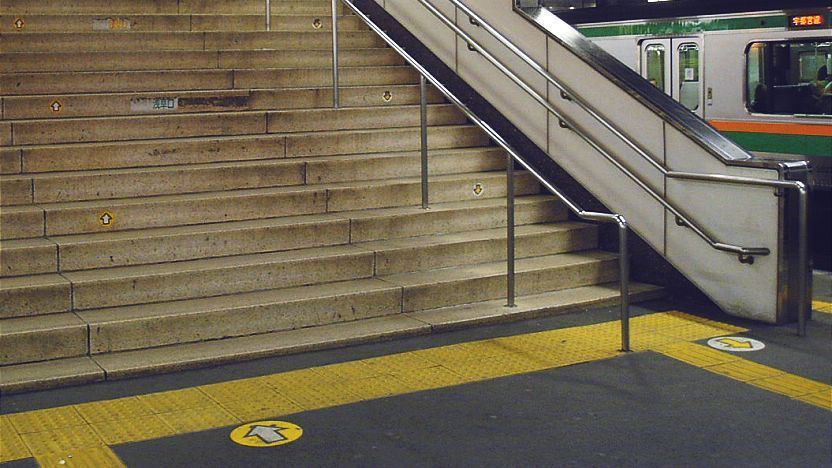
In recent years, walking on escalators has increasingly been discouraged; however, it seems unenforceable, especially during peak hours. If you stand on escalators, stand on the left, except in Osaka where people stand on the right. Be very careful with luggage on escalators and secure them so that they do not fall.
Waiting passengers form lines on platforms. Join them. Look out for markings on the platform that indicate where to line up. Do not smoke anywhere in the station except in the designated smoking area (if available).
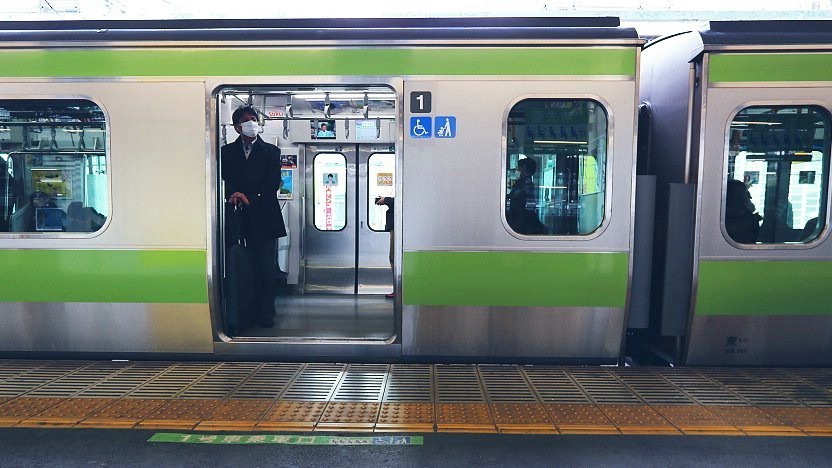
Inside trains
Wait for people to alight before boarding. Then, board swiftly so that people behind you can board quickly as well. Hold kids on their hands when boarding/alighting.
Avoid bringing large luggage onto trains, especially during busy travel times. If you have big luggage, consider using delivery services for the convenience of yourself and the people around you. Take off backpacks in crowded trains. Put them in front of you or onto luggage racks. Don't block the aisles or door area with luggage.
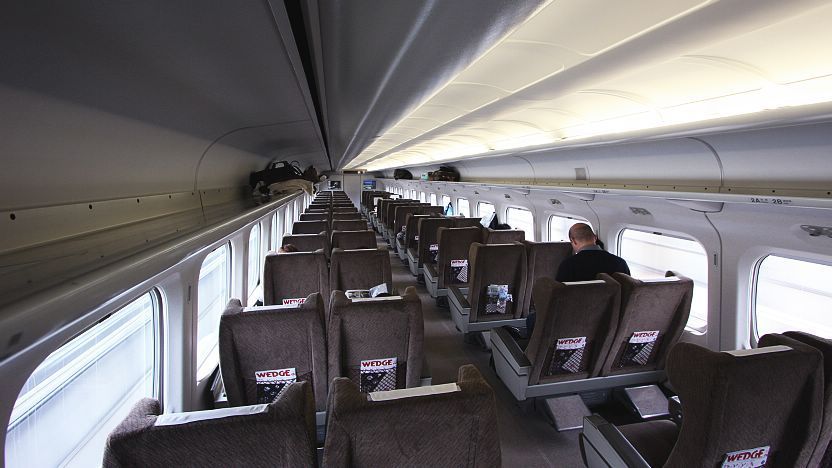
Keep your voice down. Talking loudly on trains is considered bad mannered and ranks highly amongst the most annoying behaviors on trains in Japan. Don't talk on the phone. Only on long-distance trains on the decks between cars is talking on the phone acceptable. Set your phone to silent mode. Set the volume of your headphones low.
Do not take up more than one seat by opening your legs widely or placing your belongings on the seat beside you. Don't stretch out your legs. Remove children's shoes if they are going to kneel or stand on the seats. Leave priority seats to those who need them. Use a face mask if you have cold-like symptoms.
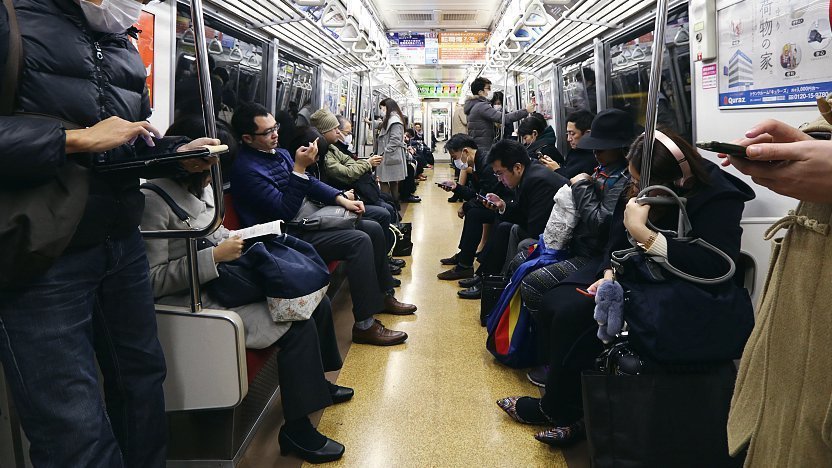
When reclining seats on long-distance trains, pay consideration to the person behind you. Don't just recline abruptly without notice. When alighting, put your seat back into its upright position, open up window blinds and take all garbage with you.
Refrain from eating on urban trains. However, the consumption of snacks, meals and drinks is perfectly okay at your seat on long-distance trains, but avoid bringing overly smelly food and make sure not to leave any garbage behind.
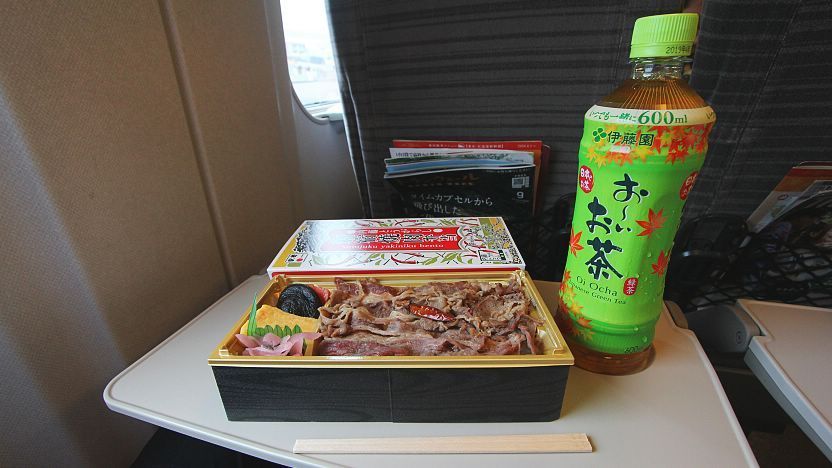
Questions? Ask in our forum.